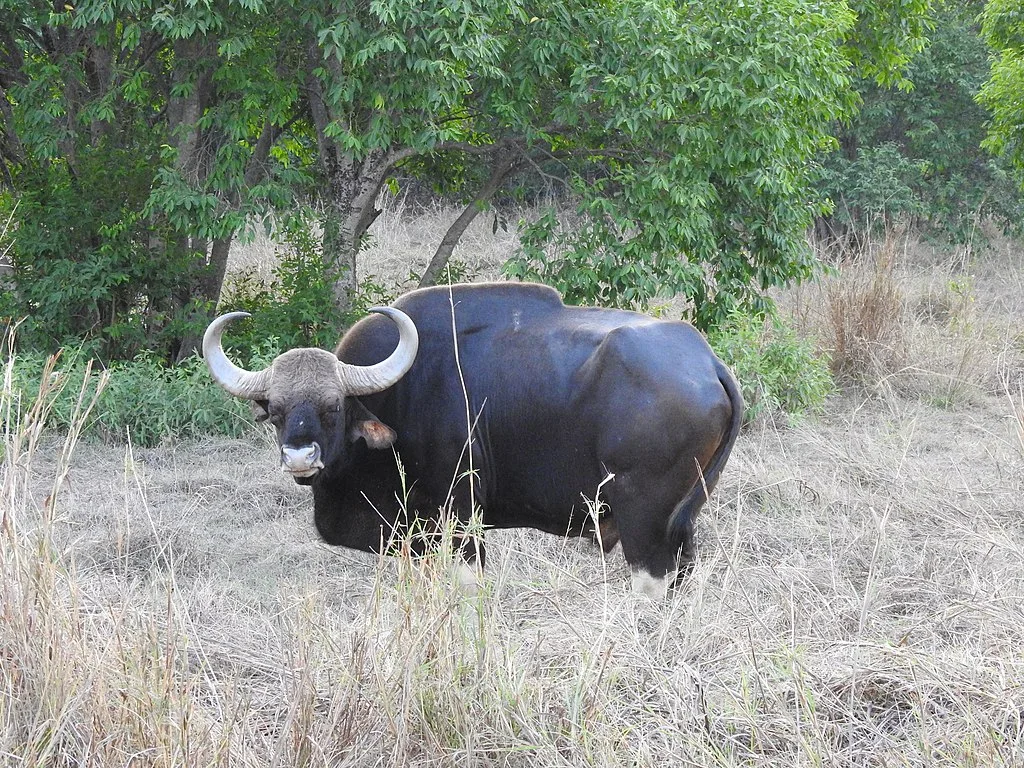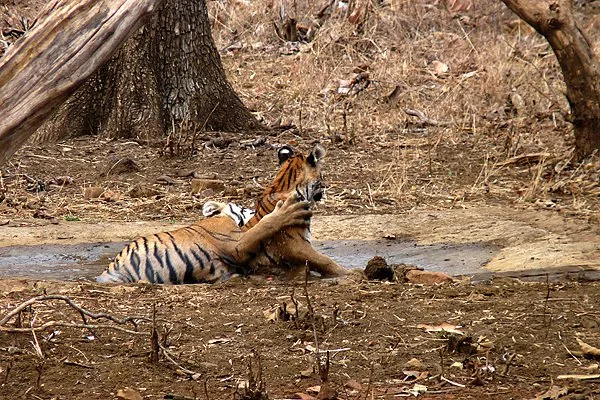Nestled in the serene landscapes of Karnataka, India, the Biligiriranga Swamy Temple Tiger Reserve stands as a unique fusion of spirituality and untamed wilderness. This sanctuary, located at the confluence of the Western Ghats and the Eastern Ghats, beckons both pilgrims and nature enthusiasts to explore its diverse ecosystems. In this article, we will unravel the historical tapestry, the intricate dance of flora and fauna, and the immersive experiences that await those seeking a connection with nature in this captivating haven.
What is Biligiriranga Swamy Temple Tiger Reserve Famous For?
Biligiriranga Swamy Temple Tiger Reserve is celebrated for its cultural significance and the coexistence of a temple within its boundaries. Beyond its fame as a tiger habitat, the reserve boasts a rich diversity of wildlife, from elephants and gaurs to a plethora of bird species. The spiritual aura of the Biligiriranga Swamy Temple adds a unique and harmonious element to the natural beauty of the sanctuary.
History of Biligiriranga Swamy Temple Tiger Reserve
The historical roots of Biligiriranga Swamy Temple Tiger Reserve are deeply intertwined with the region’s cultural and ecological significance. The reserve’s establishment reflects Karnataka’s commitment to preserving its natural heritage and maintaining the sanctity of the revered Biligiriranga Swamy Temple. Biligiriranga Swamy Temple Tiger Reserve stands as a testament to the state’s dedication to wildlife conservation and spiritual harmony.
Temple and Wildlife Coexistence
The Biligiriranga Swamy Temple, perched atop the hills within the reserve, has been a site of worship for centuries. The seamless coexistence of the temple and the diverse ecosystems of the sanctuary is a testament to the cultural richness and ecological balance maintained in the region.
Conservation Initiatives
Biligiriranga Swamy Temple Tiger Reserve is part of Karnataka’s broader conservation initiatives aimed at protecting the biodiversity of the Western Ghats. The reserve’s inclusion in the Project Tiger program underscores its commitment to tiger conservation and the preservation of the region’s ecological balance.
Flora at Biligiriranga Swamy Temple Tiger Reserve
Entering Biligiriranga Swamy Temple Tiger Reserve immerses visitors in a vibrant tapestry of flora. The reserve’s landscapes showcase a variety of vegetation types, from evergreen forests to grassy meadows. The lush greenery and unique plant species contribute to the enchantment of Biligiriranga Swamy Temple Tiger Reserve.
Evergreen Forests
Biligiriranga Swamy Temple Tiger Reserve is characterized by evergreen forests that cloak the hills in a dense cover of vegetation. These forests create a haven for a variety of wildlife, providing shelter and sustenance for numerous species. The diverse tree species contribute to the ecological richness of the reserve.
Grasslands
The open grasslands within Biligiriranga Swamy Temple Tiger Reserve offer a different perspective, adding to the variety of habitats within the sanctuary. These meadows provide grazing grounds for herbivores and create picturesque landscapes against the backdrop of the temple hills.
Fauna at Biligiriranga Swamy Temple Tiger Reserve

The real allure of Biligiriranga Swamy Temple Tiger Reserve reveals itself as one encounters its diverse fauna. While the Bengal tiger is the flagship species, the reserve is also home to elephants, gaurs, various deer species, and a myriad of birdlife. The varied habitats within the reserve contribute to a rich biodiversity that captures the essence of the Western Ghats.
Bengal Tiger

Biligiriranga Swamy Temple Tiger Reserve is a vital habitat for the Bengal tiger, a majestic and endangered species. The reserve’s commitment to tiger conservation includes habitat preservation, anti-poaching measures, and community engagement. As a result, Biligiriranga Swamy Temple Tiger Reserve plays a crucial role in the conservation efforts for this iconic big cat.
Elephants and Gaurs
Apart from tigers, Biligiriranga Swamy Temple Tiger Reserve is known for its significant population of elephants and gaurs. These large herbivores roam through the forests and grasslands, contributing to the overall charm of the sanctuary. Observing these gentle giants in their natural habitat is a highlight for wildlife enthusiasts.
Avian Diversity
Biligiriranga Swamy Temple Tiger Reserve boasts a rich avian diversity, with numerous bird species gracing its skies and woodlands. The varied habitats, including forests, grasslands, and water bodies, create ideal conditions for both resident and migratory birds. Bird watchers can delight in the opportunity to spot and observe the reserve’s feathered residents.
Safari Experience at Biligiriranga Swamy Temple Tiger Reserve
Embarking on a safari in Biligiriranga Swamy Temple Tiger Reserve is a journey into the heart of the Western Ghats. The reserve offers both jeep safaris and guided nature walks, allowing visitors to explore its diverse landscapes and observe wildlife in their natural habitat. Knowledgeable guides share insights into the park’s ecology, ensuring a rich and informative safari experience.
Jeep Safaris
Jeep safaris in Biligiriranga Swamy Temple Tiger Reserve offer a comfortable and immersive way to explore the reserve’s interior. The evergreen forests, grasslands, and temple hills provide varied settings for wildlife sightings. The Bengal tiger, elephants, gaurs, and diverse bird species are among the many highlights that visitors may encounter during a safari.
Guided Nature Walks
For those seeking a closer connection with nature, guided nature walks offer a more intimate exploration of Biligiriranga Swamy Temple Tiger Reserve. Trained naturalists lead visitors through designated trails, sharing information about the park’s flora, fauna, and the cultural significance of the temple hills. Walking through the evergreen forests and meadows enhances the sensory experience of being in Biligiriranga Swamy Temple Tiger Reserve.
How to Reach Biligiriranga Swamy Temple Tiger Reserve
Nearest Airport and Railway Station
For those planning a visit, Kempegowda International Airport in Bangalore serves as the nearest air gateway. The reserve is accessible by road from the airport, providing a scenic journey through Karnataka’s countryside. Additionally, the nearest railway station is in Chamarajanagar, offering rail connectivity for visitors traveling by train.
Road Connectivity
Biligiriranga Swamy Temple Tiger Reserve is well-connected by road, allowing access from various parts of Karnataka. The reserve’s entry
points, including K.Gudi and B.R. Hills, serve as gateways for visitors. Public and private transport options ensure a comfortable and scenic journey to the heart of the reserve.
Accommodation Options
To enhance the Biligiriranga Swamy Temple Tiger Reserve experience, visitors can find accommodation options within and around the reserve. Jungle lodges and resorts provide comfortable stays, allowing guests to immerse themselves in the tranquility of the Western Ghats. It’s advisable to check availability and make reservations in advance, especially during peak wildlife viewing seasons.
Best Time to Visit Biligiriranga Swamy Temple Tiger Reserve
The optimal time to visit Biligiriranga Swamy Temple Tiger Reserve depends on personal preferences and interests. However, the post-monsoon and winter months are generally considered favorable for wildlife sightings and outdoor activities.
Post-Monsoon Season (October to March)
The post-monsoon season marks the beginning of the tourist season at Biligiriranga Swamy Temple Tiger Reserve. The weather is mild, and the reserve comes alive with lush greenery. This period is ideal for jeep safaris, nature walks, and exploring the reserve’s diverse habitats.
Winter Season (November to February)
The winter months bring a pleasant chill to the air, making it an enjoyable time to explore Biligiriranga Swamy Temple Tiger Reserve. The reduced foliage enhances visibility, increasing the chances of wildlife sightings. The evergreen forests and temple hills provide a unique landscape for photography and offer a clear view of the surrounding Western Ghats.
Things to Do at Biligiriranga Swamy Temple Tiger Reserve
Beyond safari experiences, Biligiriranga Swamy Temple Tiger Reserve offers a range of activities to engage visitors and provide a deeper understanding of its diverse ecosystems.
Temple Visit
A visit to the Biligiriranga Swamy Temple is a cultural and spiritual experience. Set against the backdrop of the Western Ghats, the temple offers panoramic views of the surrounding landscapes. Pilgrims and visitors alike can appreciate the architectural beauty and cultural significance of this revered site.
Tribal Cultural Interaction
Engaging with the local Soliga tribal communities offers visitors a cultural perspective on life in the region. The Soligas have a deep connection with the Biligiriranga Swamy Temple and the surrounding forests. Interactions provide an opportunity to learn about their traditions, art forms, and sustainable practices.
Bird Watching
Biligiriranga Swamy Temple Tiger Reserve is a paradise for bird watchers, with its varied habitats supporting a diverse avian population. Binoculars and bird identification guides become essential tools as visitors attempt to spot and document the vibrant plumage and unique behaviors of the reserve’s feathered inhabitants.
Nature Photography
The scenic landscapes and diverse wildlife of Biligiriranga Swamy Temple Tiger Reserve offer ample opportunities for nature photography. From the elusive Bengal tiger to the colorful birdlife, photographers can capture the untamed beauty of the Western Ghats.
Interesting Trivia about Biligiriranga Swamy Temple Tiger Reserve
- Sacred Biligiriranga Swamy Temple: The Biligiriranga Swamy Temple, dedicated to Lord Ranganatha, holds immense cultural and religious significance. Pilgrims believe that visiting the temple brings blessings and spiritual harmony.
- Soliga Tribes: The Soliga tribal communities residing in the region have a unique relationship with the Biligiriranga Swamy Temple and the surrounding forests. Their traditional knowledge contributes to the conservation of the biodiversity in the area.
- Butterfly Diversity: The reserve is known for its diverse butterfly species. The evergreen forests and meadows provide an ideal habitat for these delicate insects, adding to the ecological richness of the Western Ghats.
In conclusion, Biligiriranga Swamy Temple Tiger Reserve stands as a testament to Karnataka’s commitment to both wildlife conservation and cultural heritage. From the spiritual aura of the temple to the diverse flora and vibrant birdlife, every aspect of the reserve invites visitors to witness the harmonious coexistence of nature and culture in this South Indian sanctuary.
